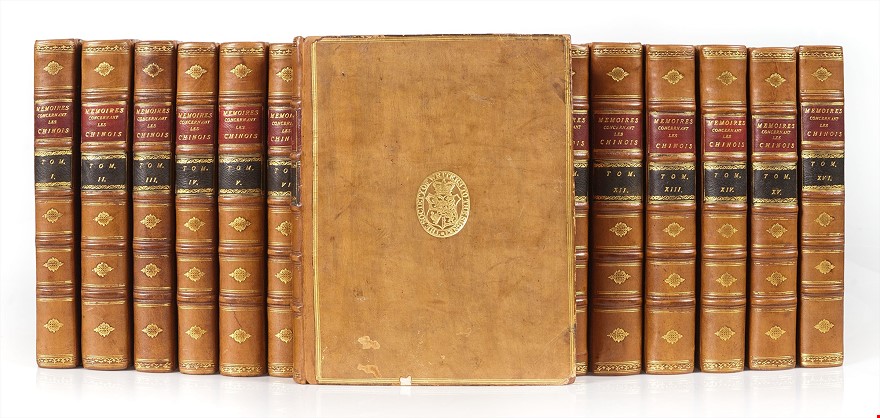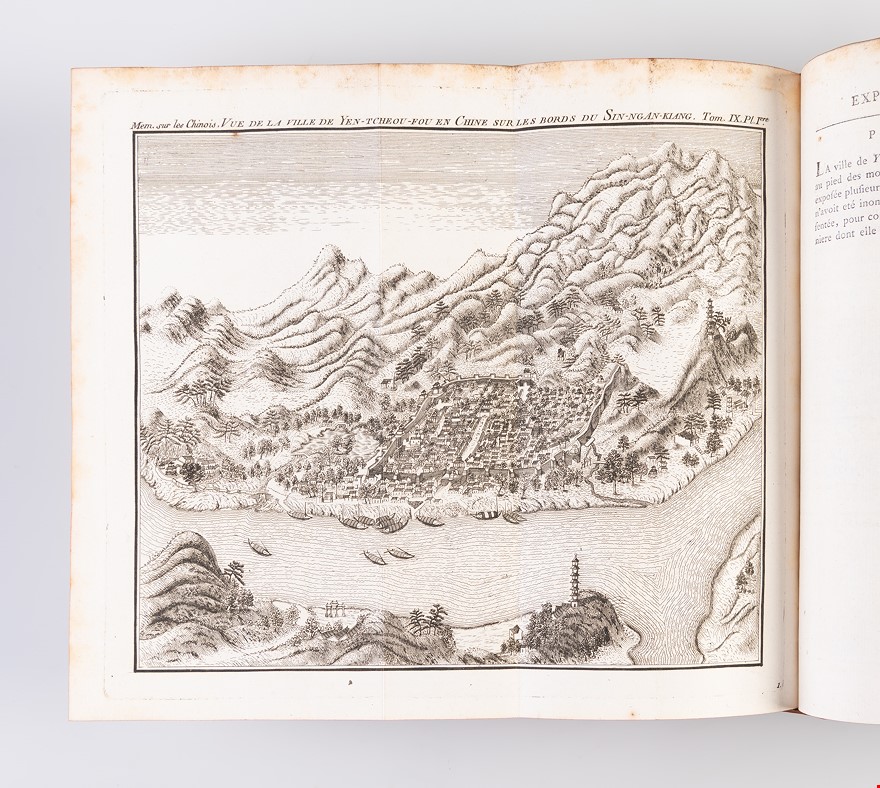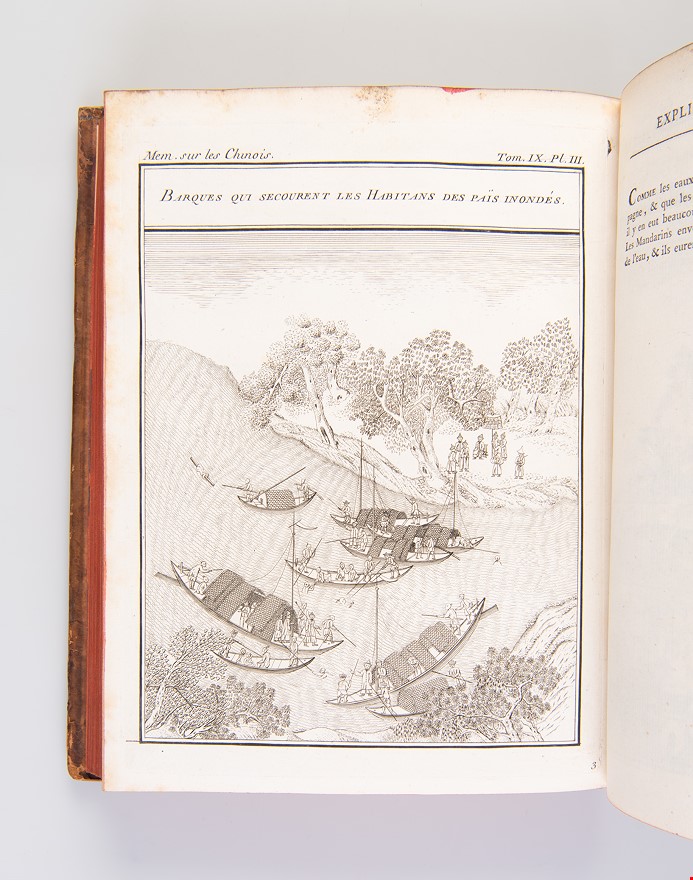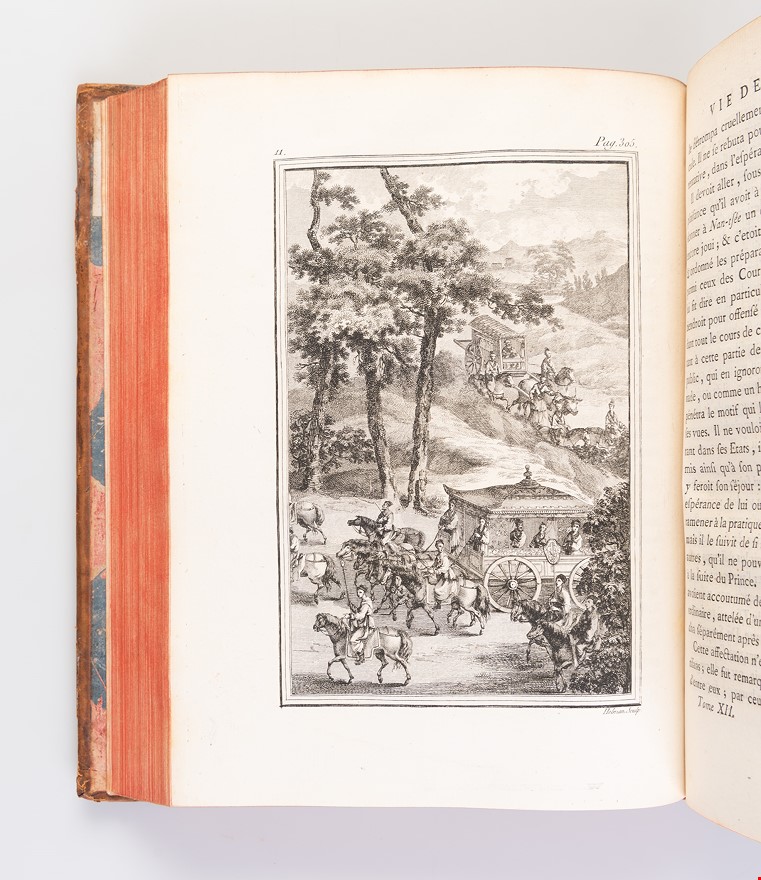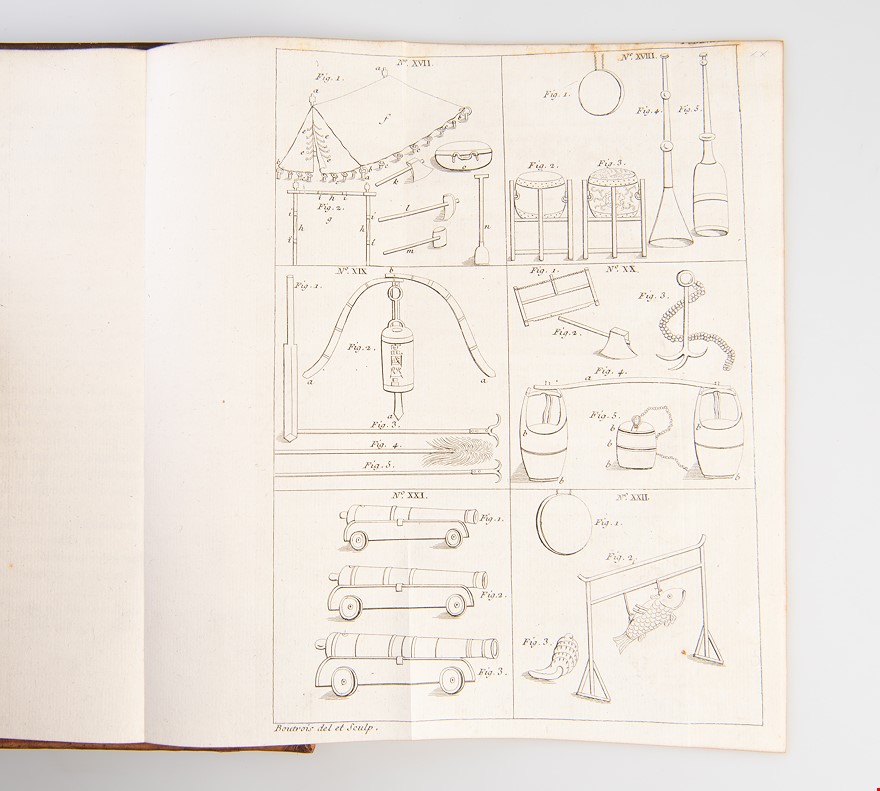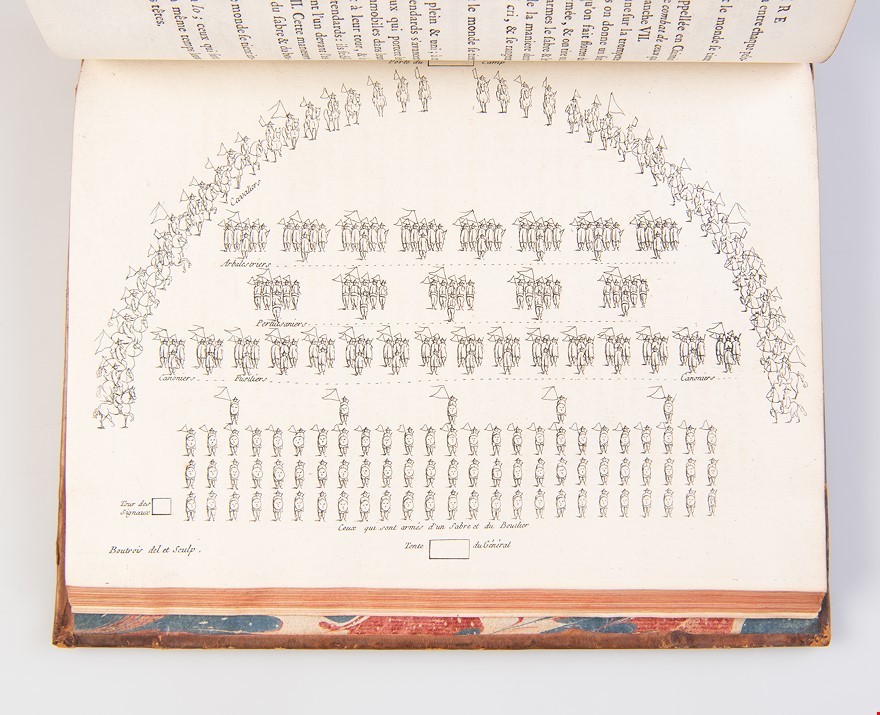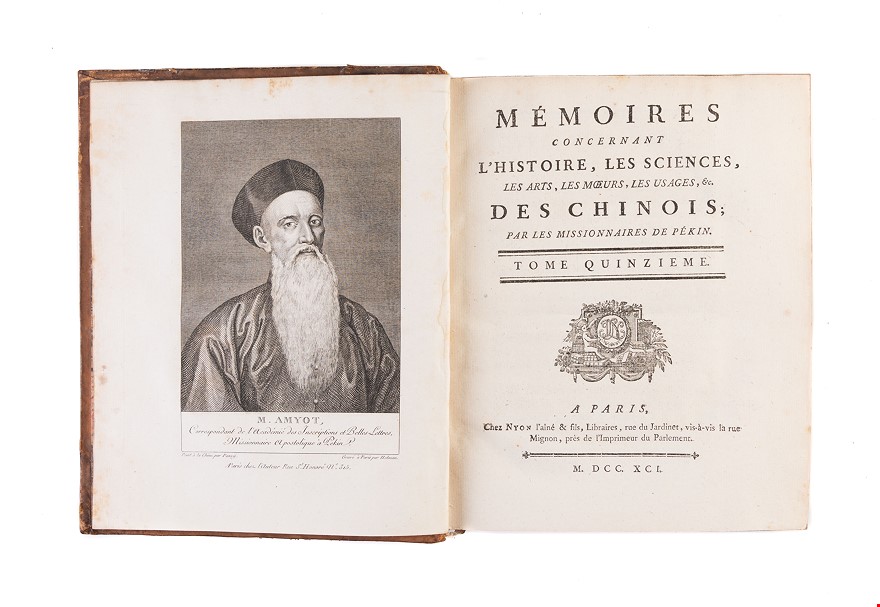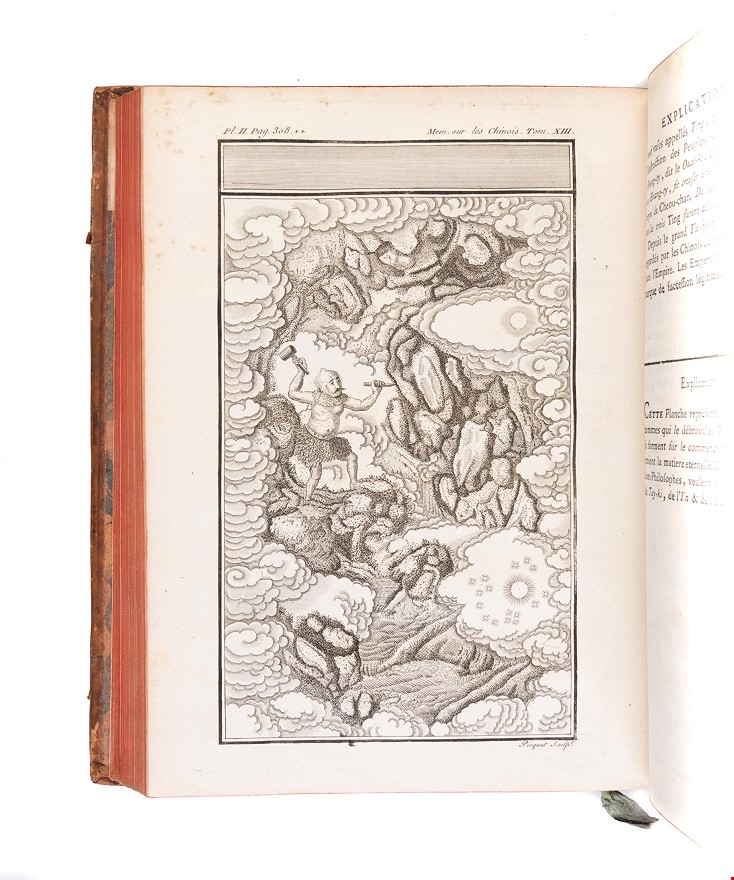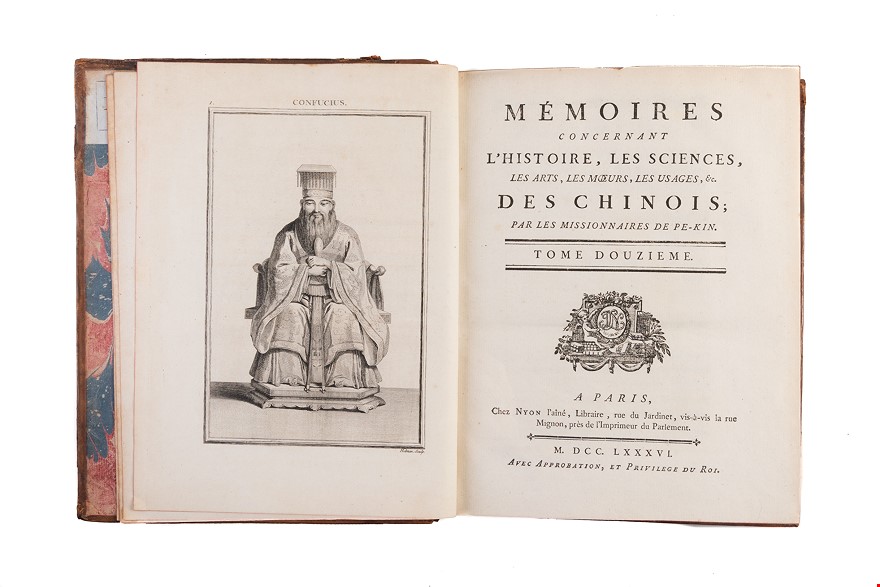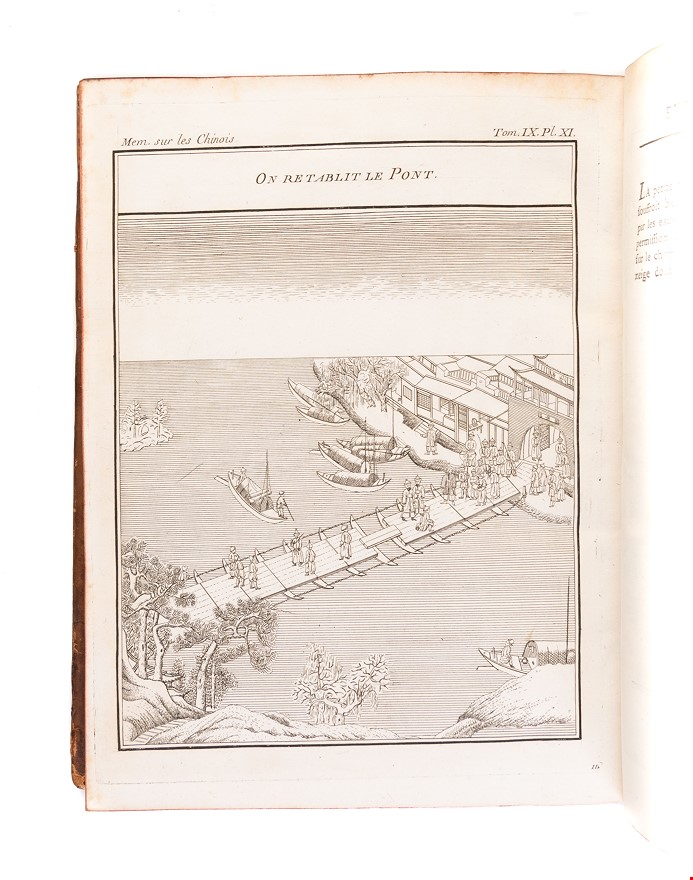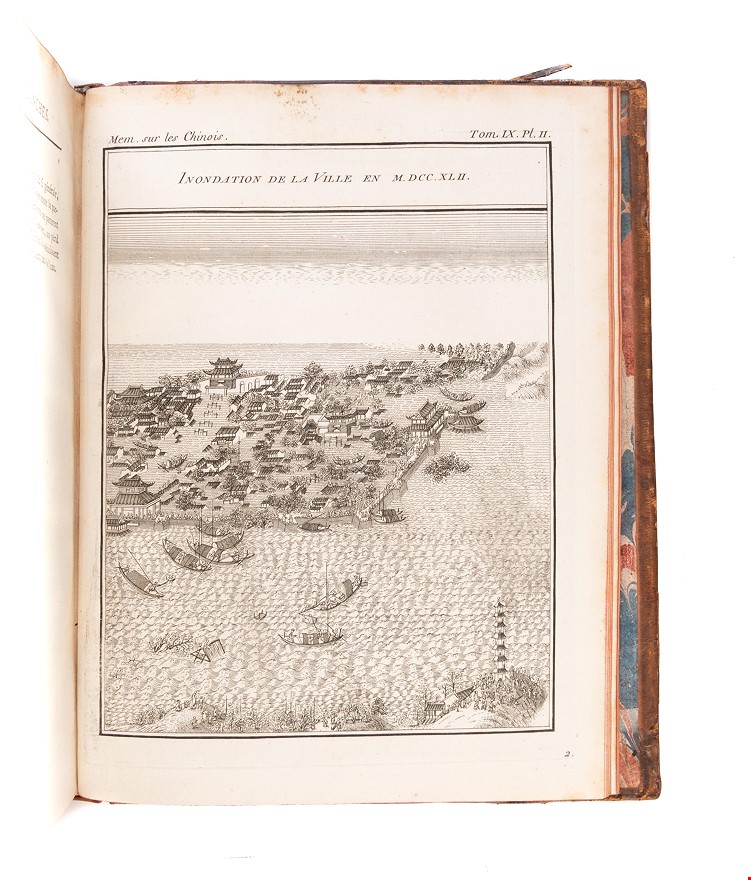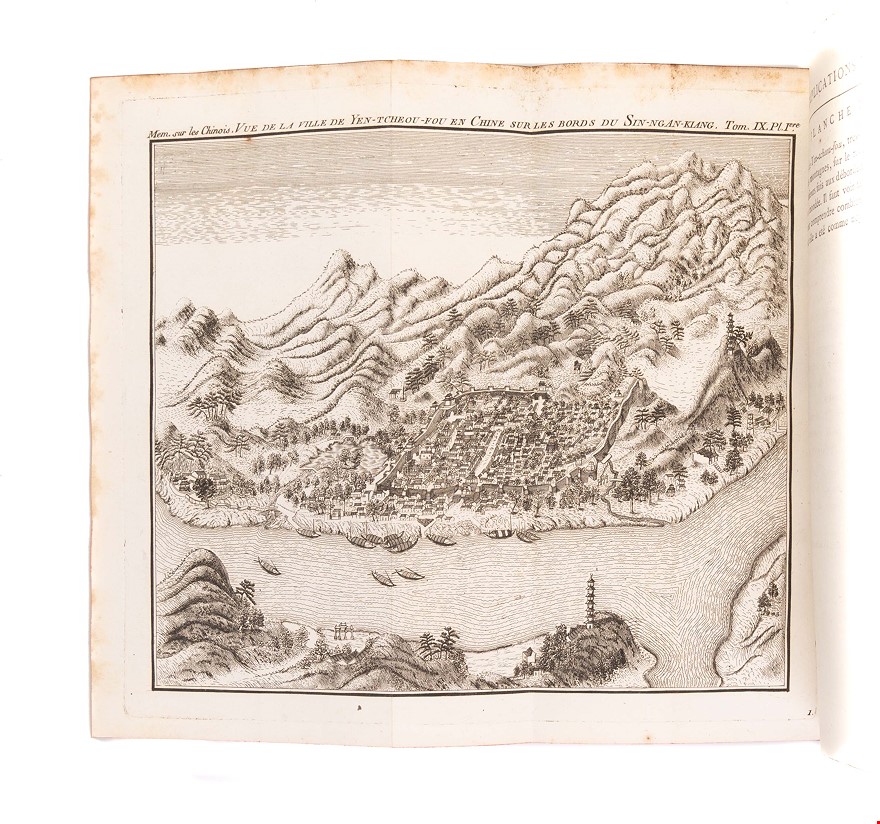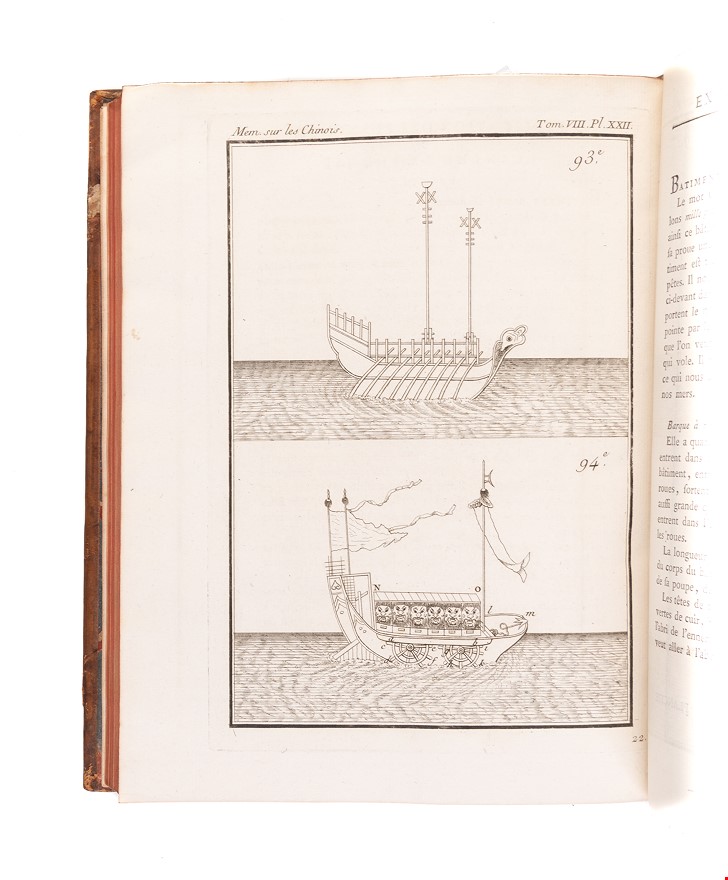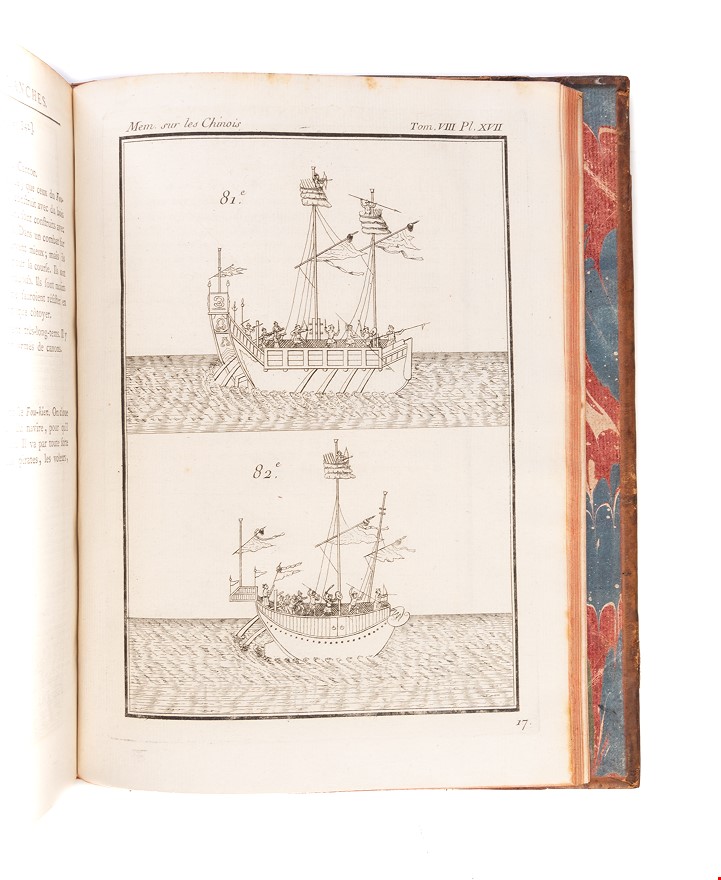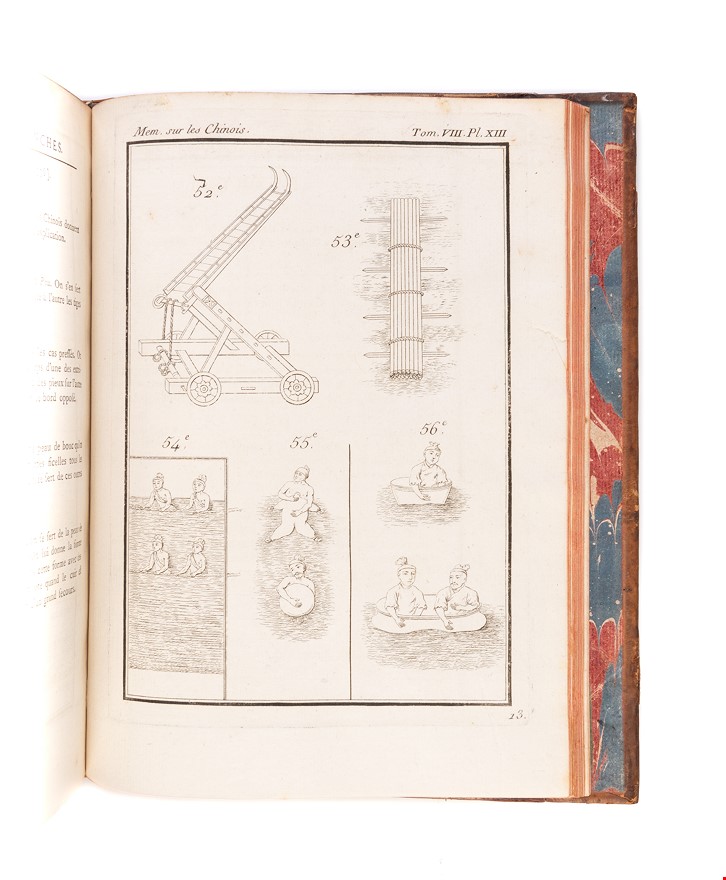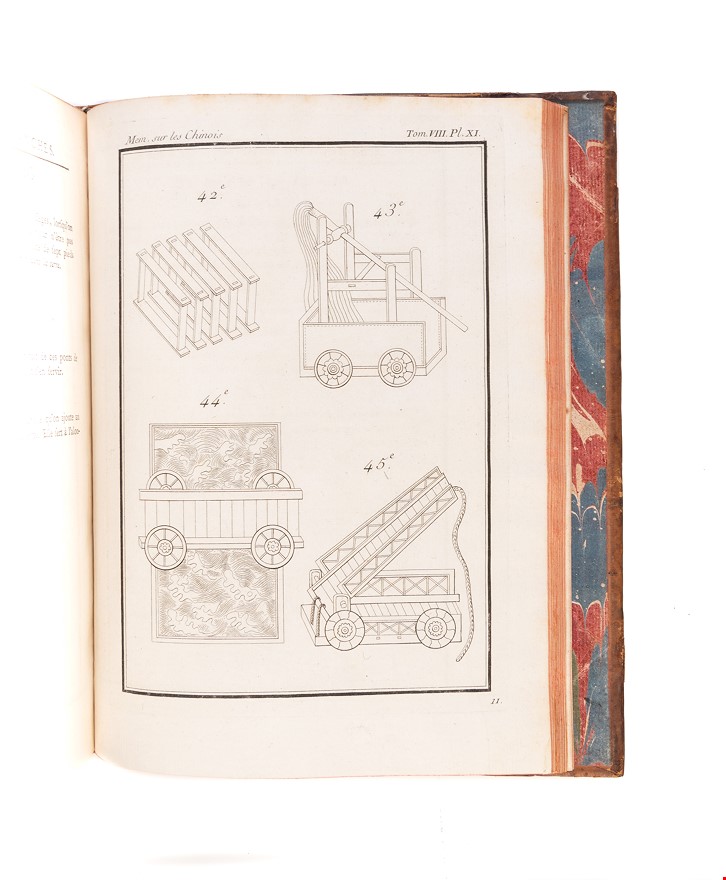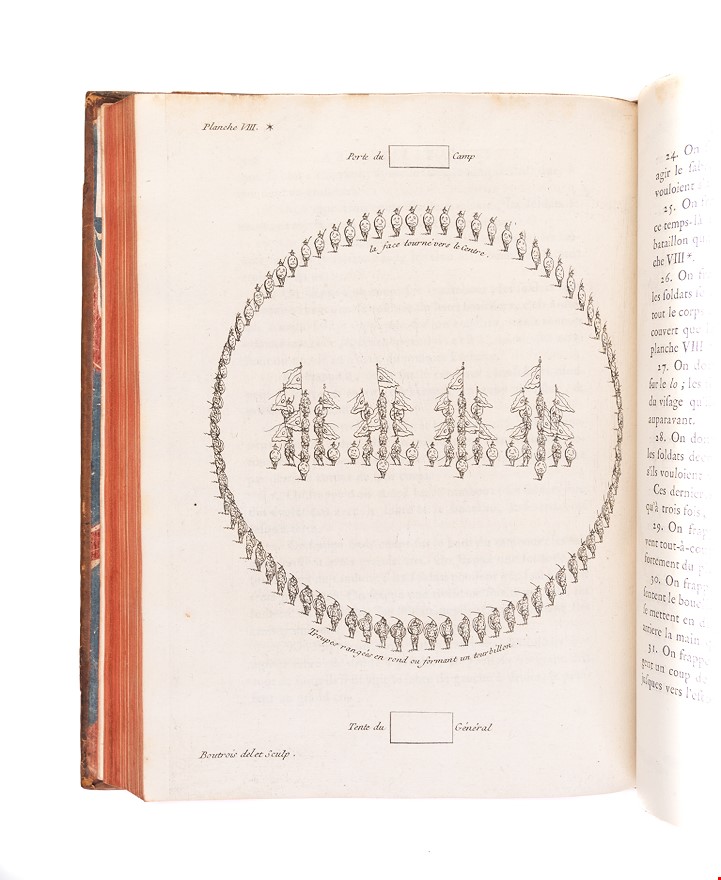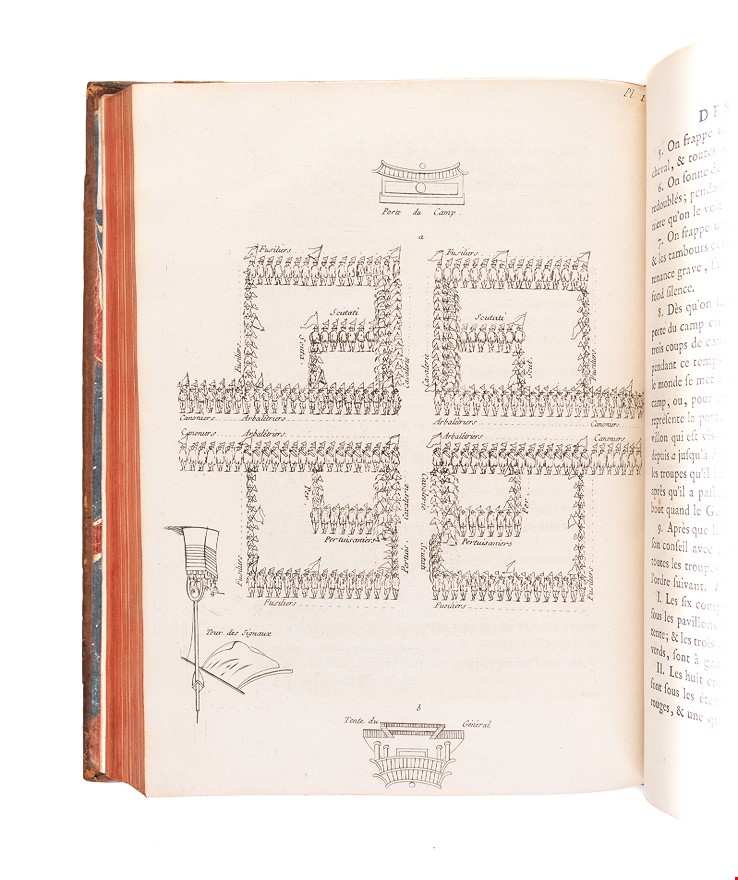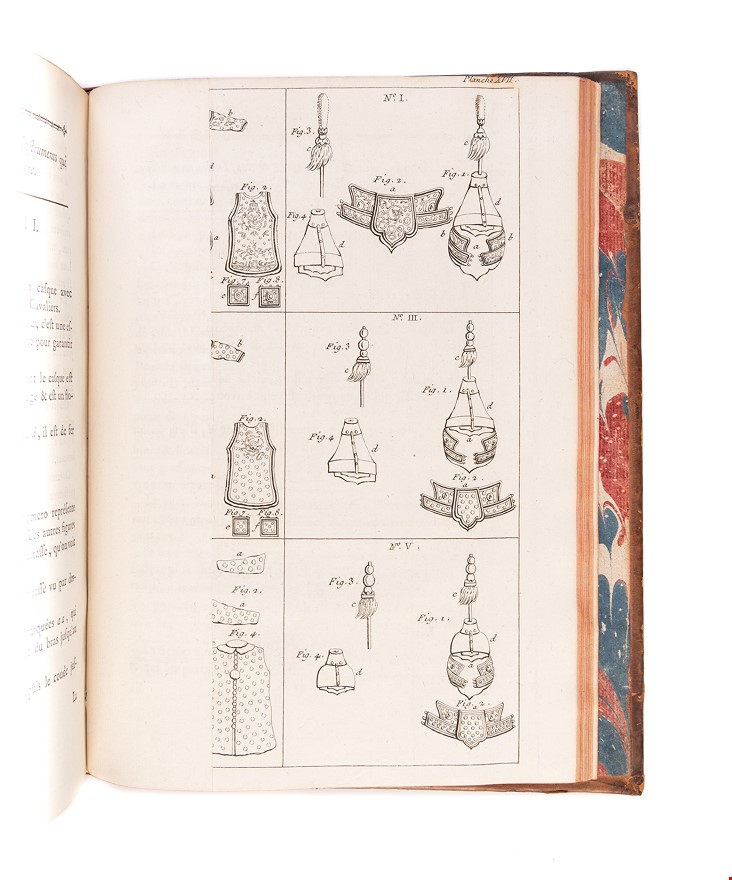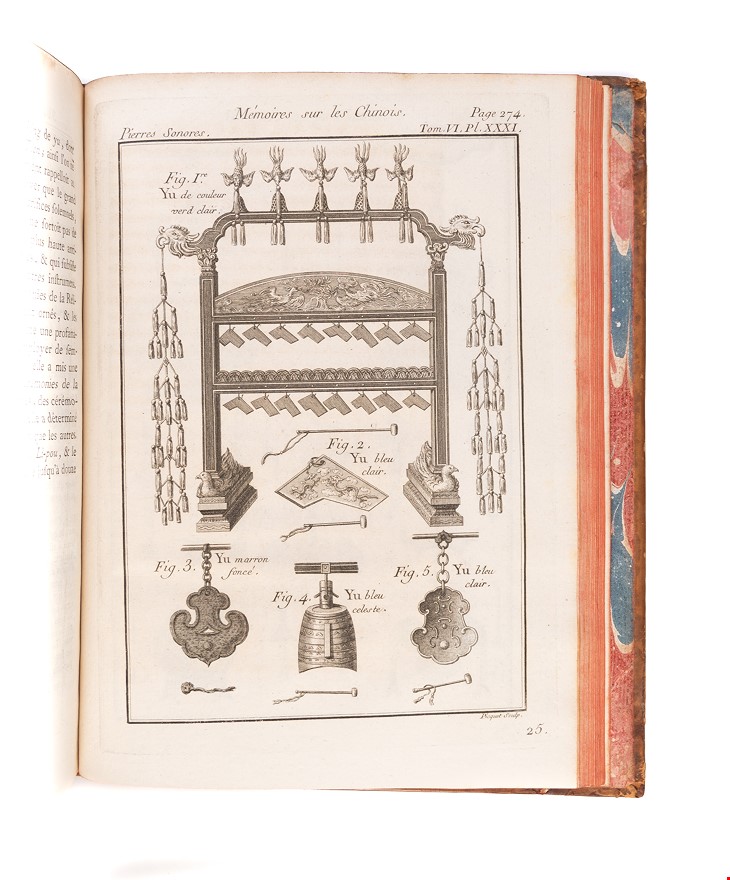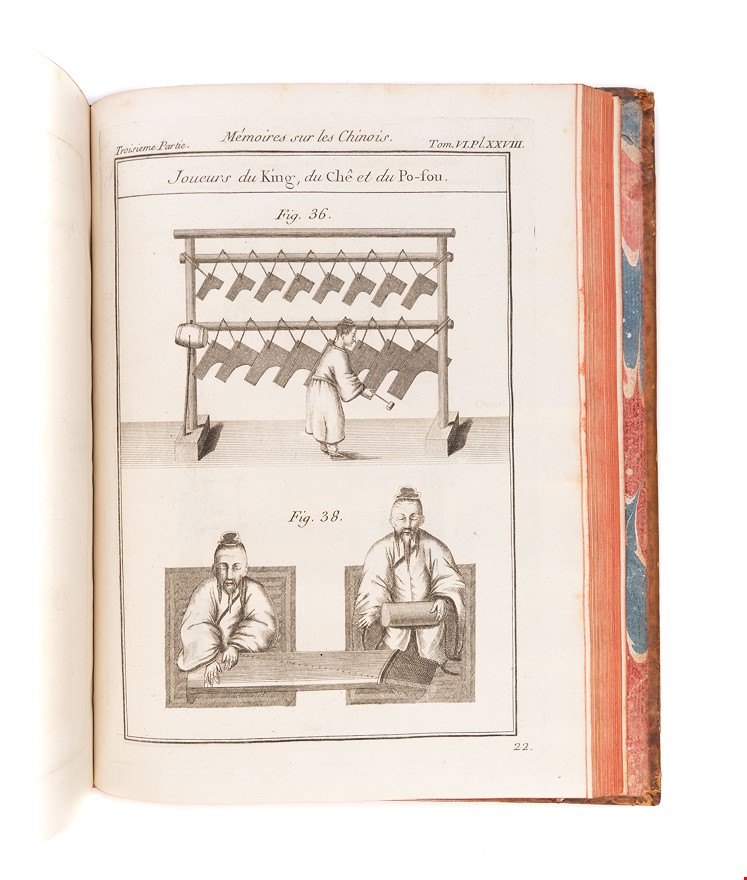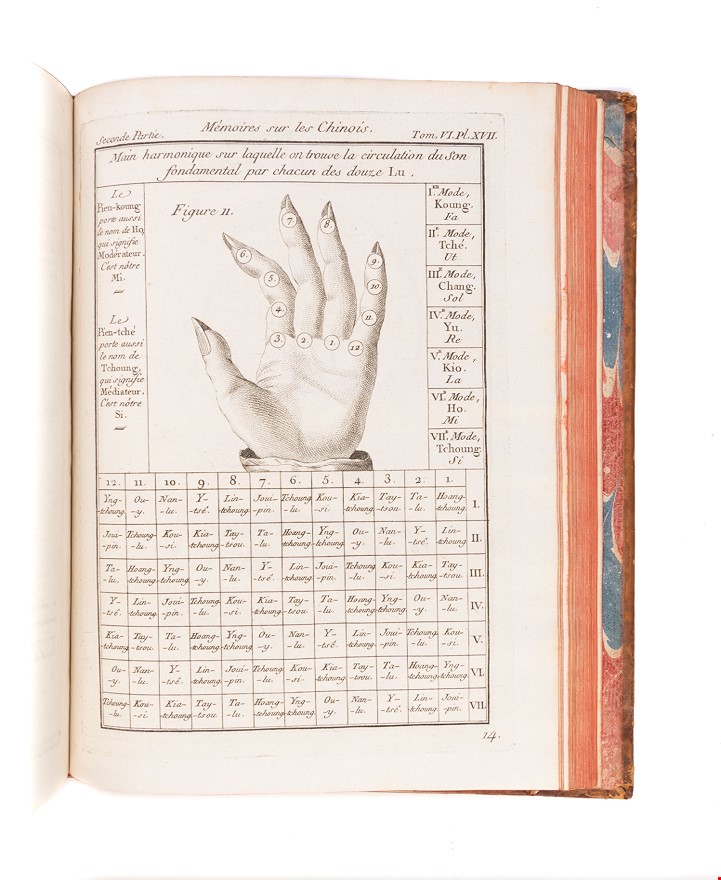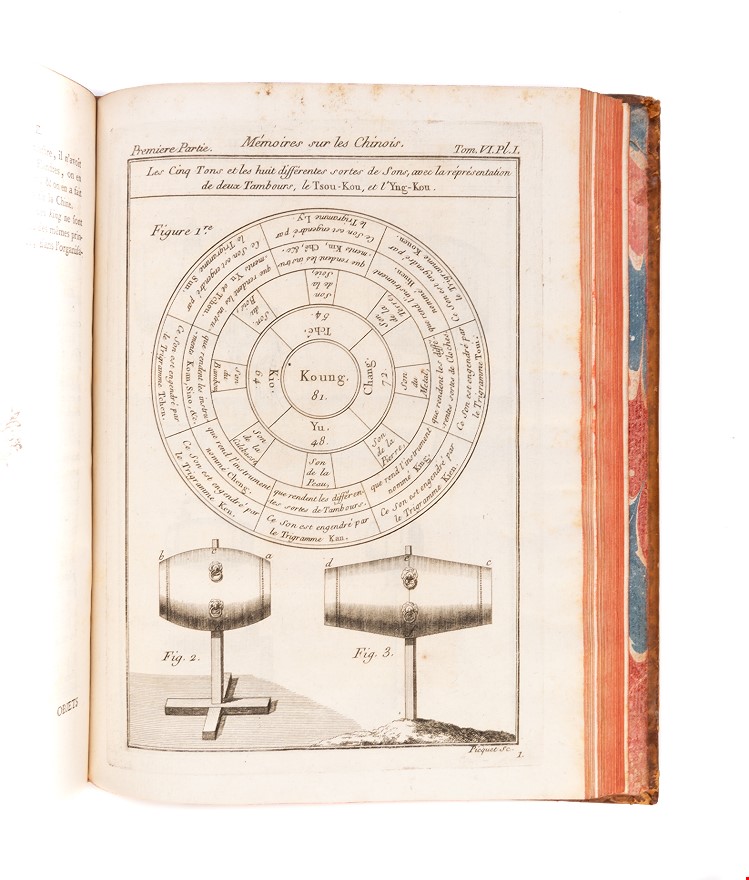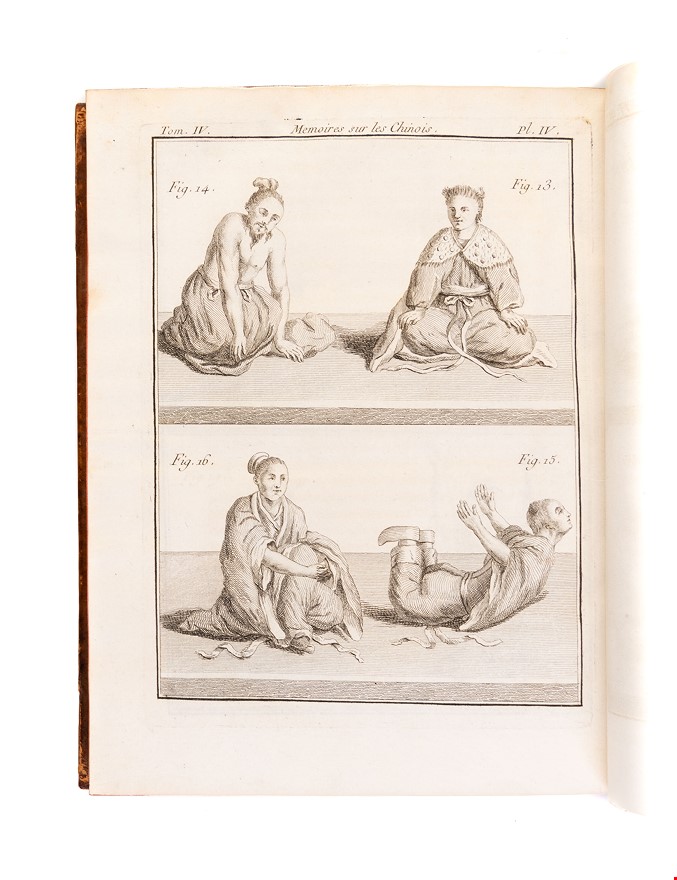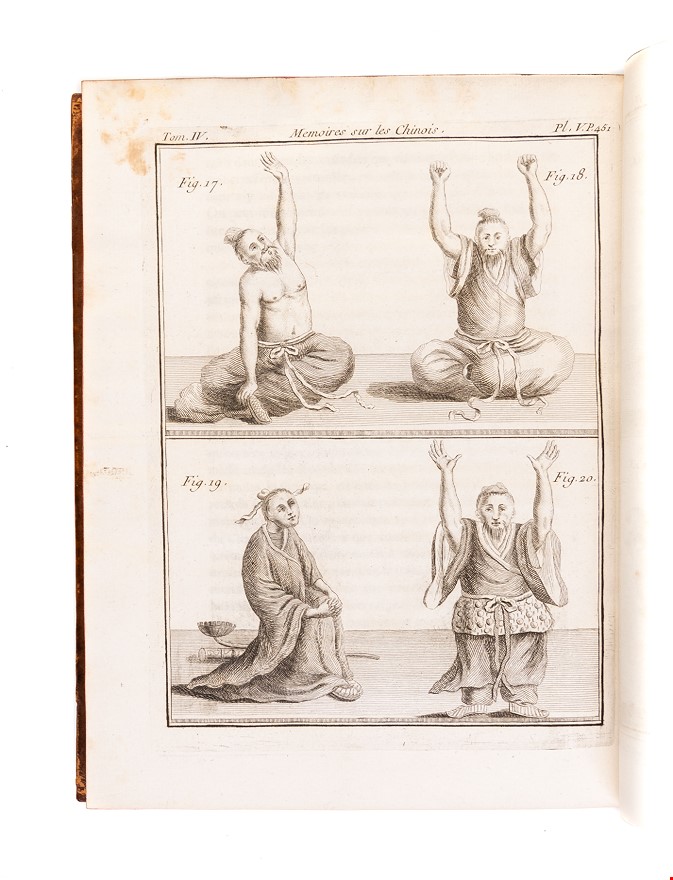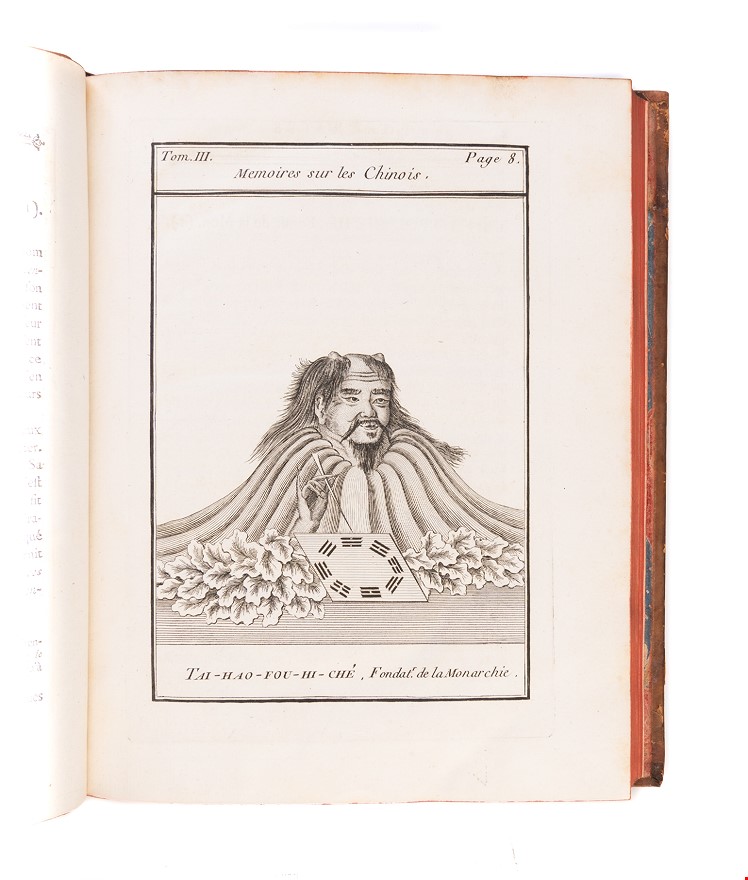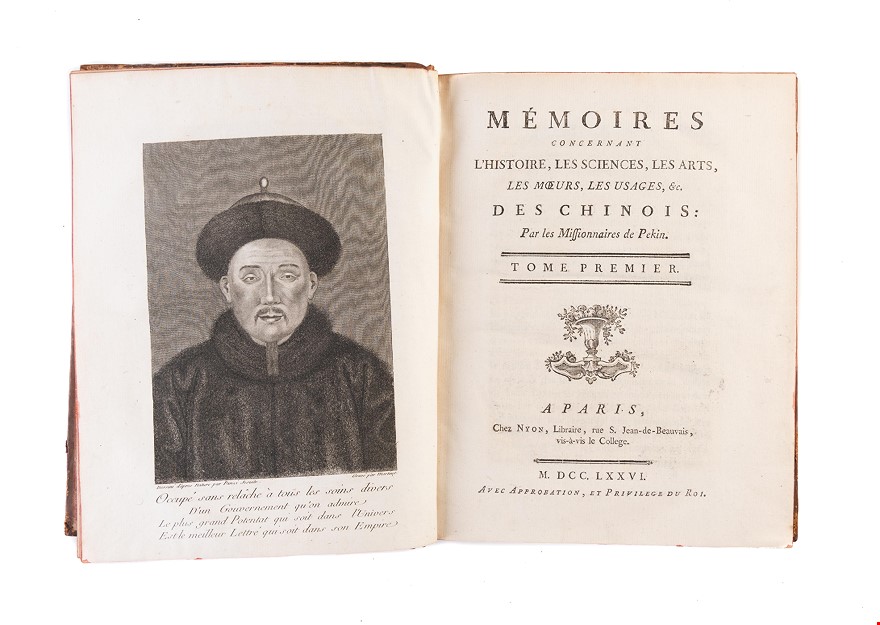Mémoires concernant l'histoire, les sciences, les arts, les moeurs, les usages . . . des Chinois . . . par les Missionnaires de Pekin.
AMIOT Joseph SJ, and others (1814.)
£23500.00 [First Edition]
Please contact us in advance if you would like to view this book at our Curzon Street shop.
SIGNET LIBRARY COPY
First edition. 17 vols. bound in 16. Complete with three frontispiece portraits, 165 engraved plates & maps (some folding), and 27 tables in vol. 2. 4to. Uniformly bound in early 19th century polished calf with gilt Signet library device embossed on front and back boards, elegantly re-backed. Some occasional minor staining and light foxing, (damp and water-staining affecting vol. 2), but overall a very good set. Paris, Nyon/Treuttel & Würtz, 1776-
“In a revealing anecdote, Friedrich Melchior Grimm and Denis Diderot tell the story of how Louis XV of France, supposedly the ”greatest philosopher of his kingdom,“ felt that things were not well in his domain. Speaking one day with Henri Bertin, one of his five Ministers of State, specifically on the need to reform the spirit of the nation, he asked how one might go about this. Bertin returned a few days later and replied that the solution was 'Sire, to inoculate the French with the Chinese spirit.' The king found this idea so brilliant that he approved everything that Bertin might suggest in order to bring this about.” (John Finlay: Henri Bertin and the Representation of China in Eighteenth-Century France. London, Routledge, 2020, Introduction). The present work is a result of this conversation.
Henri Bertin (1720-92), the controller of finances under Louis XV and Louis XVI, asked French Jesuits in Peking to train and select two Chinese to be sent to France. The two converts, Aloys Ko (Gao Ren, 1732-1795?) and Etienne Yang (Yang Zhide, 1733-1798?), had to be smuggled out of China as it was strictly forbidden for Chinese to leave their country. They left Canton on board a French East India Company ship in January 1754 and arrived in Lyon six months later. For eleven years they were instructed in religious matters at various Jesuit institutions and were eventually ordained priests. At the same time two members of the Royal Academy of Sciences (Mathurin-Jacques Brisson & Louis-Claude Cadet de Gassincourt) were tasked with their education in the arts and sciences, particularly in matters that were deemed important to French industry, namely agriculture, mining, weapons-, textile-, porcelain-, and (interestingly) paper-production. They returned to China in 1765 with a pension from the French King on the understanding that they would send reports and illustrated materials that would improve the knowledge of China in France.
The Mémoires were published over a period of 38 years with much of the cost being carried by Henri Bertin or - ultimately - the French crown. The main contributor to the Memoires was Joseph Amiot (1718-94) who had arrived in Peking in August 1751 and remained there for the rest of his life (a fine portrait in volume XV shows him wearing Chinese dress). Others include Gaubil, Prémare, Cibot, and Poirot. It is interesting to observe that project continued in spite of the fact that the Jesuit order had been banned in France in 1764. The French monarchy continued to financially support the Jesuit mission in Peking, purely because it was deemed to be of interest to the French State.
The Jesuits were the first Europeans to make a thorough study of Chinese language, literature, history, and people, however, the focus of the Mémoiresis very much based on original Chinese sources: The first volume of the includes a translation of the Emperor Qianlong‘s account of his conquests in Western China. The frontispiece shows him wearing Manchu winter dress and he is honoured in the following glowing terms: “Occupé sans relâche à tous les soins divers d’un Goivernement qu’on admire, le plus grand Potentat qui soit dans l’Univers est le meilleur Lettré qui soit dans son Empire [Working tirelessly for an admirable government - the greatest ruler in the world and the best scholar of his empire]” – a remarkable accolade, possibly made by Bertin himself. The notion that China was run by a benevolent ruler who dispensed his power throughout the empire using scholar officials selected on the basis of public examinations had considerable impact on France and was deemed to be a sign of an enlightened attitude.
However, the largest part of volume 1 is taken up by an essay on the ‘Antiquity of the Chinese nation’ contributing to a controversy that raged across 18th century Europe over the true date of the biblical flood which in turn affected the date of the beginning of the world. Chinese chronology threw many of these assumptions into doubt and additional material is printed throughout the Mémoires documenting the importance these arguments held for scientific community.
The other volumes include translations of a wide variety of Chinese texts, incl. the Confucian Classics; Chinese law, maxims, and proverbs; as well as essays on Chinese linguistics, current affairs and scientific observation. Vol. VII is a reprint of Amiot’s important work on Chinese military strategy, weapons and uniforms, including the first French translation of Sunzi’s famous ’Art of War’ (5thcentury BC), as well as the ‘Wuzi’ (4thcentury BC) and the Methods of Sima (4thcentury BC). There are also biographies of noted Chinese throughout history, texts on martial arts, food and silk-production, musical instruments, natural history, astronomy, and medicine. Furthermore, it contains Amiot’s ‘Life of Confucius’ (vol. XII) which had great influence on French philosophers of the 18th century, who were impressed with the way that Confucianism formed a strong social order apparently without having to rely on religious dogma. Volume IX deals with the important Chinese practices relating to water regulation and flooding. It includes an illustrated account of a flood in Yanzhou fu which took place in 1742. In China, flood prevention was seen as one of the Emperor’s chief tasks and essential in demonstrating good government upon which his claim to power rested. Much of this document deals with the way in which governmental rescue and reconstruction efforts helped the affected population.
One cannot help but feel that Bertin was actually attempting to instil a sense of responsibility in the French monarchs before it was too late. Again and again China is held up as an example from which France could benefit, and much of it is of a practical nature. The engraved illustrations play a prominent role in this impressive compendium of Chinese knowledge. Almost all of them are based on contemporary Chinese illustrations which would clearly show the reality of China to the French reader in a way that went beyond the descriptive quality of words.
Of particular rarity are the two supplementary vols. XVI&XVII which were published some 23 years after volume XV. The first is a continuation of the ‘Abridged History of the Tang Dynasty’ by Antoine Gaubil (1689-1759), while the second is a Chinese chronology from the beginning of time to the year 206 B.C. (i.e. to shortly after the end of the first Qin dynasty) by the same author.
A beautiful and very rare complete set of the most comprehensive survey of all aspects of Chinese life in the 18th century. From the prestigious Signet library, which formed part of the Society of Writers to Her Majesty’s Signet, a private society of Scottish solicitors dating back to 1594. Lust 96; Cordier 54-56; Catalogue: China Illustrata 93.
Collation: pp. [iv], xvi, 485, [1]; viii, 650; 504; iv, 510; iv, 518; [iv], 380; xii, v-xii, [iii]-x, [3]-397, [2], [1, blank]; vi, [ii], 375, [1]; xxiv, 470; xi, [i], 510; xxiv, 609, [1]; [iv], vii, [i], 532; [iv], xvi, 543; xvi, 561, [1]; [iv], 516; [iv], vi, 395, [1]; x, 291.
Stock Code: 212095
